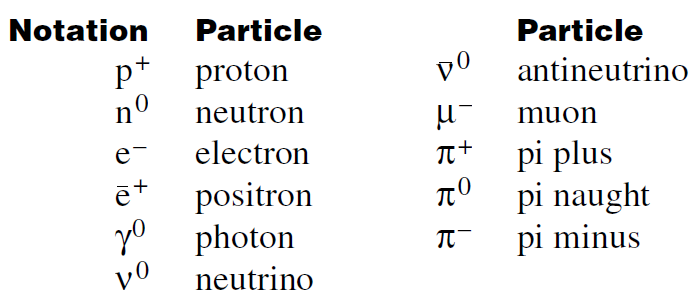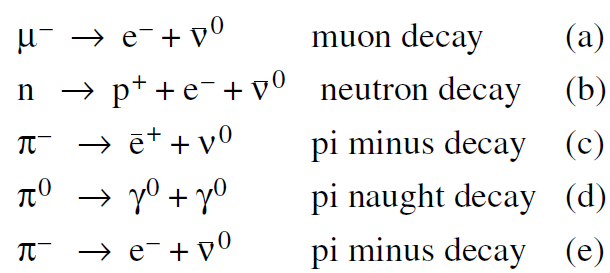
تاريخ الفيزياء

علماء الفيزياء


الفيزياء الكلاسيكية

الميكانيك

الديناميكا الحرارية


الكهربائية والمغناطيسية

الكهربائية

المغناطيسية

الكهرومغناطيسية


علم البصريات

تاريخ علم البصريات

الضوء

مواضيع عامة في علم البصريات

الصوت


الفيزياء الحديثة


النظرية النسبية

النظرية النسبية الخاصة

النظرية النسبية العامة

مواضيع عامة في النظرية النسبية

ميكانيكا الكم

الفيزياء الذرية

الفيزياء الجزيئية


الفيزياء النووية

مواضيع عامة في الفيزياء النووية

النشاط الاشعاعي


فيزياء الحالة الصلبة

الموصلات

أشباه الموصلات

العوازل

مواضيع عامة في الفيزياء الصلبة

فيزياء الجوامد


الليزر

أنواع الليزر

بعض تطبيقات الليزر

مواضيع عامة في الليزر


علم الفلك

تاريخ وعلماء علم الفلك

الثقوب السوداء


المجموعة الشمسية

الشمس

كوكب عطارد

كوكب الزهرة

كوكب الأرض

كوكب المريخ

كوكب المشتري

كوكب زحل

كوكب أورانوس

كوكب نبتون

كوكب بلوتو

القمر

كواكب ومواضيع اخرى

مواضيع عامة في علم الفلك

النجوم

البلازما

الألكترونيات

خواص المادة


الطاقة البديلة

الطاقة الشمسية

مواضيع عامة في الطاقة البديلة

المد والجزر

فيزياء الجسيمات


الفيزياء والعلوم الأخرى

الفيزياء الكيميائية

الفيزياء الرياضية

الفيزياء الحيوية

الفيزياء العامة


مواضيع عامة في الفيزياء

تجارب فيزيائية

مصطلحات وتعاريف فيزيائية

وحدات القياس الفيزيائية

طرائف الفيزياء

مواضيع اخرى
CONSERVATION OF CHARGE
المؤلف:
E. R. Huggins
المصدر:
Physics 2000
الجزء والصفحة:
541
14-12-2020
2187
CONSERVATION OF CHARGE
Up to this point, we have used the concept of electric charge to simplify the calculation of the electric force between two objects containing many electrons and protons. But the fact that electrons and protons have precisely opposite charges suggests that in nature electric charge has a deeper significance. That deeper significance is the conservation of electric charge. Like the conservation of energy, linear momentum, and angular momentum, the conservation of electric charge appears to be a basic law with no known exceptions. When we look beyond the familiar electrons and protons, into the world of subnuclear particles, we find a bewildering array of hundreds of different kinds of particles. In the chaos of such an array of particles, two features stand out. Almost all of the particles are unstable, and when the unstable particles decay, electric charge is conserved. In looking at the particle decays, it becomes clear that there really is something we call electric charge that is passed from one particle to another, and not lost when a particle decays.
We will illustrate this with a few examples. We have already discussed several unstable particles, the muon introduced in the muon lifetime experiment, the π mesons, created for cancer research, and the neutron which, by itself outside a nucleus, has a half life of nine minutes. The muon decays into an electron and a neutrino, and the neutron decays into a proton, electron and an antineutrino (the antiparticle of the neutrino). There are three separate π mesons. The negative charged one decays into an electron and an antineutrino, the positive one into a positron (antielectron) and neutrino, and the neutral one into two photons.
We can shorten our description of these decays by introducing shorthand notation for the particles and their properties. We will use the Greek letter μ (mu) for the muon, π for the π mesons, ν (nu) for the neutrino and γ (gamma) for protons. We designate the charge of the particle by the superscript + for a positive charge, – for a negative, and 0 for uncharged. Thus the three π mesons are designated π+ , π0 , and π– for the positive, neutral and negative ones respectively. In later discussions, it will be useful to know whether we are dealing with a particle or an antiparticle. We denote antiparticles by putting a bar over the symbol, thus ν represents a neutrino, and ν an antineutrino. Since a particle and an antiparticle can annihilate each other, a particle and an antiparticle must have opposite electric charges if they carry charge at all, so that charge will not be lost in the annihilation. As a result the antiparticle of the electron e– is the positively charged positron which we designate e+ .
Using these conventions, we have the following notation for the particles under discussion (photons and neutrinos are uncharged):

The particle decays we just described can now be written as the following reactions.

Note that in all of these decays, the particles change but the charge does not. If we start with a negative charge, like the negative muon, we end up with a negative particle, the electron. If we start with a neutral particle like the π0 , we end up with no net charge, in this case two photons.
Among the hundreds of elementary particle decays that have been studied, no one has found an example where the total charge changed during the process. It is rather impressive that the concept of positive and negative charge, introduced by Ben Franklin to explain experiments involving rubber rods and cat fur, would gain even deeper significance at the subnuclear level.
 الاكثر قراءة في الكهربائية
الاكثر قراءة في الكهربائية
 اخر الاخبار
اخر الاخبار
اخبار العتبة العباسية المقدسة

الآخبار الصحية















 قسم الشؤون الفكرية يصدر كتاباً يوثق تاريخ السدانة في العتبة العباسية المقدسة
قسم الشؤون الفكرية يصدر كتاباً يوثق تاريخ السدانة في العتبة العباسية المقدسة "المهمة".. إصدار قصصي يوثّق القصص الفائزة في مسابقة فتوى الدفاع المقدسة للقصة القصيرة
"المهمة".. إصدار قصصي يوثّق القصص الفائزة في مسابقة فتوى الدفاع المقدسة للقصة القصيرة (نوافذ).. إصدار أدبي يوثق القصص الفائزة في مسابقة الإمام العسكري (عليه السلام)
(نوافذ).. إصدار أدبي يوثق القصص الفائزة في مسابقة الإمام العسكري (عليه السلام)


















